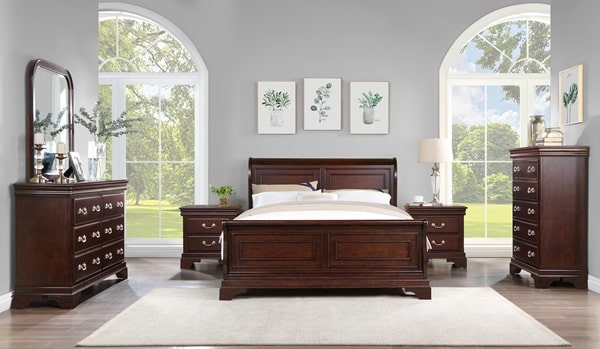As of now, if you observe the current furniture trend, you’ll realize that furniture made out of teak and rosewood is quite a hit in the market. Some people like the simple grainy texture or pattern of teak wood, whereas others prefer the more aesthetically appealing look of rosewood. But your choice to choose the perfect wood for your next woodworking project must not only depend upon the final finish of the wood. There are a lot of other things to consider. And that’s where today’s post plays a vital role. Here we will be going over the possible pros and cons of both teak wood and rosewood to give you a well rounded perfective. So yeah, let’s dive straight into it then.
Teak Wood
Doesn’t the name Teak Wood just sound sophisticated? Well, it’s not just in the name; this extraordinary wood species, a native of Southeast Asia’s luxuriant rainforests, is an absolute darling in the world of furniture craftsmanship. It’s cherished not just for its endurance, but also for its aesthetic charm that lights up any room, indoors or outdoors. Intrigued yet? Now it is time to take a leap and see what this special wood has to offer to everyone who’s considering using it for their next project.
Pros of Teak Wood
- Its grain pattern tends to be neat, compact, and, let’s be honest, ridiculously good-looking. The natural color it sports is a gorgeous golden brown that screams luxury and style wherever it goes.
- One of Teak’s biggest strengths is its versatility. It can morph into just about any furniture item you have in mind.
- Teak owes a big thank you to Mother Nature for equipping it with natural oils that provide a shield against rot, decay, and those irritating termites.
- Oh, and did we mention that maintaining teak furniture is a breeze? Say goodbye to back-breaking scrubbing or tedious polishing. Most of the time, a swift sweep with a lint-free cloth to banish any lingering dust or dirt will do the trick. Easy-peasy!
Cons of Teak Wood
- The sublime quality, durability, and allure of teak wood do carry a hefty price tag. But that is something most people won’t consider as a con of Teak Wood because you’re investing in something that’s going to stand the test of time, right?
- Telling apart genuine teak wood from its hardwood lookalikes can be a bit of a pickle. So, it’s worth spending some time getting to know your teak before you make a purchase. Shop from trusted sources or get your detective hat on and do a bit of your own due diligence to make sure you’re getting the authentic stuff.
Rosewood
When it comes to eye-catching furniture material, Rosewood is certainly a showstopper. It’s an all-star in the realm of furniture-making, renowned for its good looks, longevity, delightful smell, and unique feel it brings to a room. One can’t help but marvel at Rosewood’s allure. Its varying hues, from a charming reddish tint to a deep, purplish-brown, pair beautifully with its dense, complex grain patterns. This makes for a striking visual feast that transforms any piece of furniture into an artwork. It’s an easy conversation starter, a standout in any decor.
Pros of Rosewood
- The beautiful aesthetics of Rosewood are matched by its robustness. When given the right finish, this wood is not just eye candy; it’s also a force field against rot and termites. This resistance offers reliable longevity that justifies the initial investment, ensuring your furniture not only looks good but also lasts for generations.
- From the hands of skilled luthiers crafting beautiful musical instruments to artisans designing decorative pieces, Rosewood’s versatility is a testament to its irresistible charm. No matter where you find it, it’s sure to bring an element of richness and luxury.
- And then there’s the smell, Rosewood’s unique calling card. Mature Rosewood trees give off a sweet, rich fragrance reminiscent of roses. This characteristic aroma adds an extra sensory dimension to your furniture pieces, creating a more immersive and appealing environment.
Cons of Rosewood
- But Rosewood’s uniqueness comes with its fair share of challenges. To begin with, it’s a premium material that tends to leave a significant dent in your wallet. In many cases, Rosewood can be as pricey as, if not pricier than, its equally prestigious cousin, Teak. This high price tag is a reflection of its rarity and the intensive labor involved in its extraction and processing.
- Moreover, the species is considered vulnerable and is endangered in many areas. This means sourcing Rosewood responsibly is no easy feat, further pushing up the cost and making it a precious commodity.
- On the flip side, while Rosewood’s unique aroma can be a charming feature for some, it’s not all roses. This type of wood can, in some cases, cause skin and eye irritation. So, if you’re getting hands-on with your Rosewood furniture, it’s a smart move to take precautions and handle it with care.
Final Take
That’s about the right amount of information you need to make a final decision whether you choose teak wood or rosewood for your next project. In a way, both types of wood are equally stunning, but yeah, the beauty part is really subjective here.


